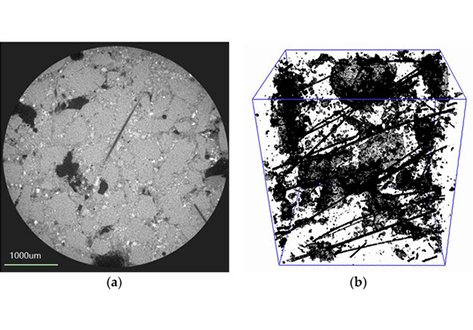An Investigation of Fiber Reinforced Chemically Bonded Phosphate Ceramic Composites at Room Temperature

In this study, chemically bonded phosphate ceramic (CBPC) fiber reinforced composites were made at indoor temperatures. The mechanical properties and microstructure of the CBPC composites were studied. The CBPC matrix of aluminum phosphate binder, metakaolin, and magnesia with different Si/P ratios was prepared. The results show that when the Si/P ratio was 1.2, and magnesia content in the CBPC was 15%, CBPC reached its maximum flexural strength. The fiber reinforced CBPC composites were prepared by mixing short polyvinyl alcohol (PVA) fibers or unidirectional continuous carbon fiber sheets. Flexural strength and dynamic mechanical properties of the composites were determined, and the microstructures of specimens were analyzed by scanning electron micrography, X-ray diffraction, and micro X-ray computed tomography. The flexural performance of continuous carbon fiber reinforced CBPC composites was better than that of PVA fiber composites. The elastic modulus, loss modulus, and loss factor of the fiber composites were measured through dynamic mechanical analysis. The results showed that fiber reinforced CBPC composites are an inorganic polymer viscoelastic material with excellent damping properties. The reaction of magnesia and phosphate in the matrix of CBPC formed a different mineral, newberyite, which was beneficial to the development of the CBPC.